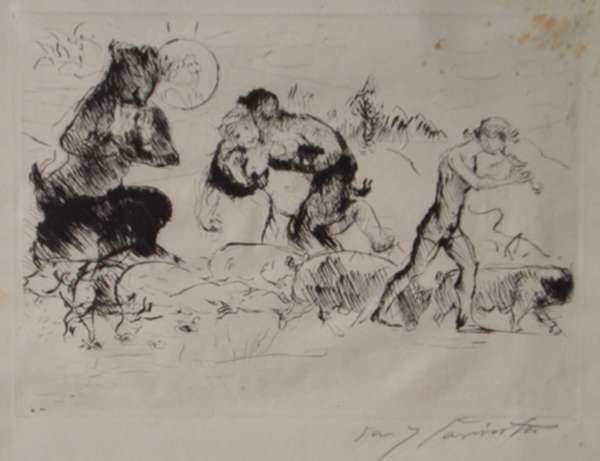Filter by Type
Filter by Category
Filter by Size
Filter by Year

Lovis Corinth
German (1858-1925)
Lovis Corinth (1858-1925) was a German painter and printmaker whose long and prolific career defies categorization. While trained in the academic tradition of the late nineteenth century, the artist was an early supporter of German Impressionism, and later transitioned to Expressionism. Corinth, alongside Max Liebermann and Max Slevogt, was a leading figure of the Berlin Secession, a group of progressive artists supporting avant-garde styles over what they regarded as the stifling influence of academic art. More than a generation older than the Expressionists, Corinth was initially critical of the Expressionist movement. However, after suffering a near fatal stroke in 1911, the artist's naturalistic style began to loosen and take on expressionistic qualities. Corinth's newfound freedom of expression marked a turning point in his career. Today he is regarded as one of the forerunners of German Expressionism.
An accomplished printmaker, Corinth produced more than 1,200 prints throughout his career, including lithographs, drypoints, and woodcuts. He turned repeatedly to themes of love, sexuality, and death in his prints, taking inspiration from the classical subjects of Greek mythology and the literary world. For Corinth, an artist's inventiveness manifested itself not in taking on new subjects, but in reinventing old ones. In his series Antike Legenden (Classical Legends) and Liebschaften des Zeus (The Love Affairs of Zeus), Corinth reworked mythological scenes to reveal an aggressive sensuality. Corinth's crude naturalism and sensual - often bawdy - interpretations of classical themes were for him a mark of originality and self-expression.
